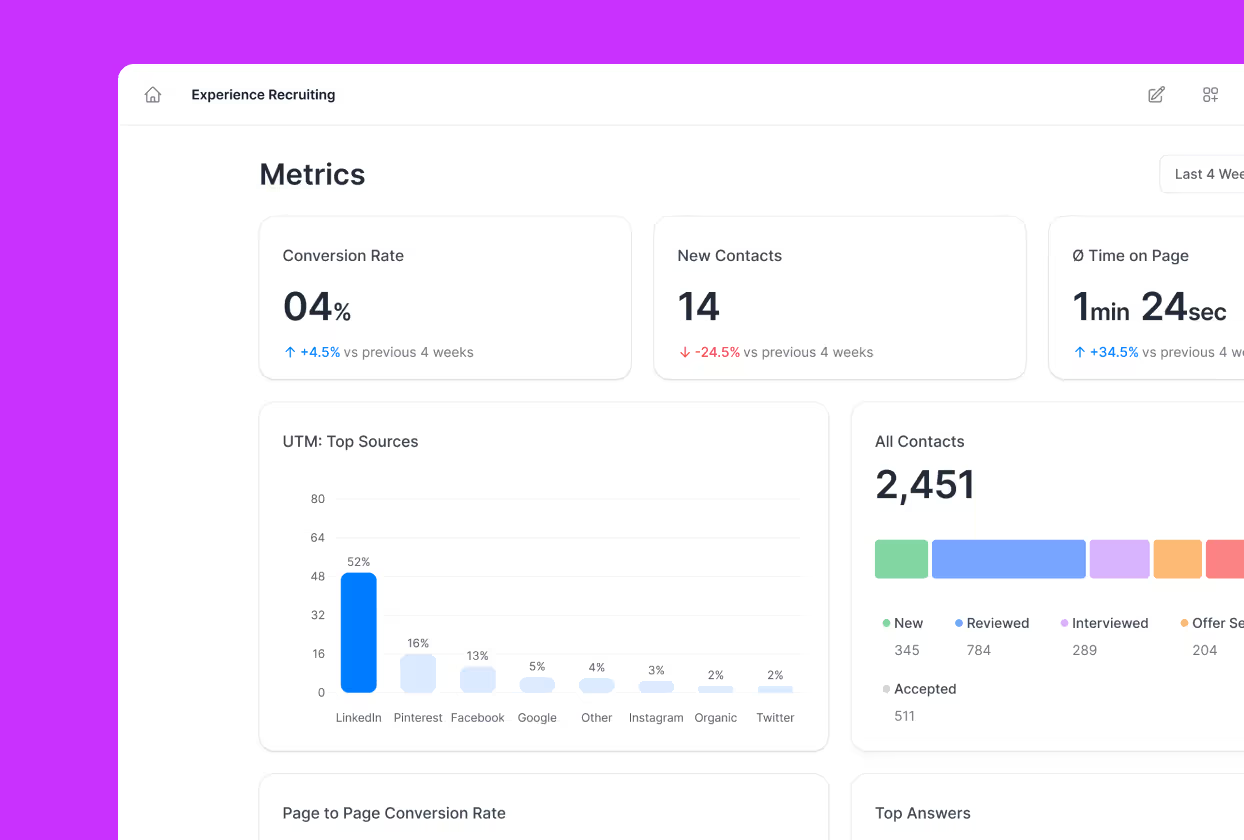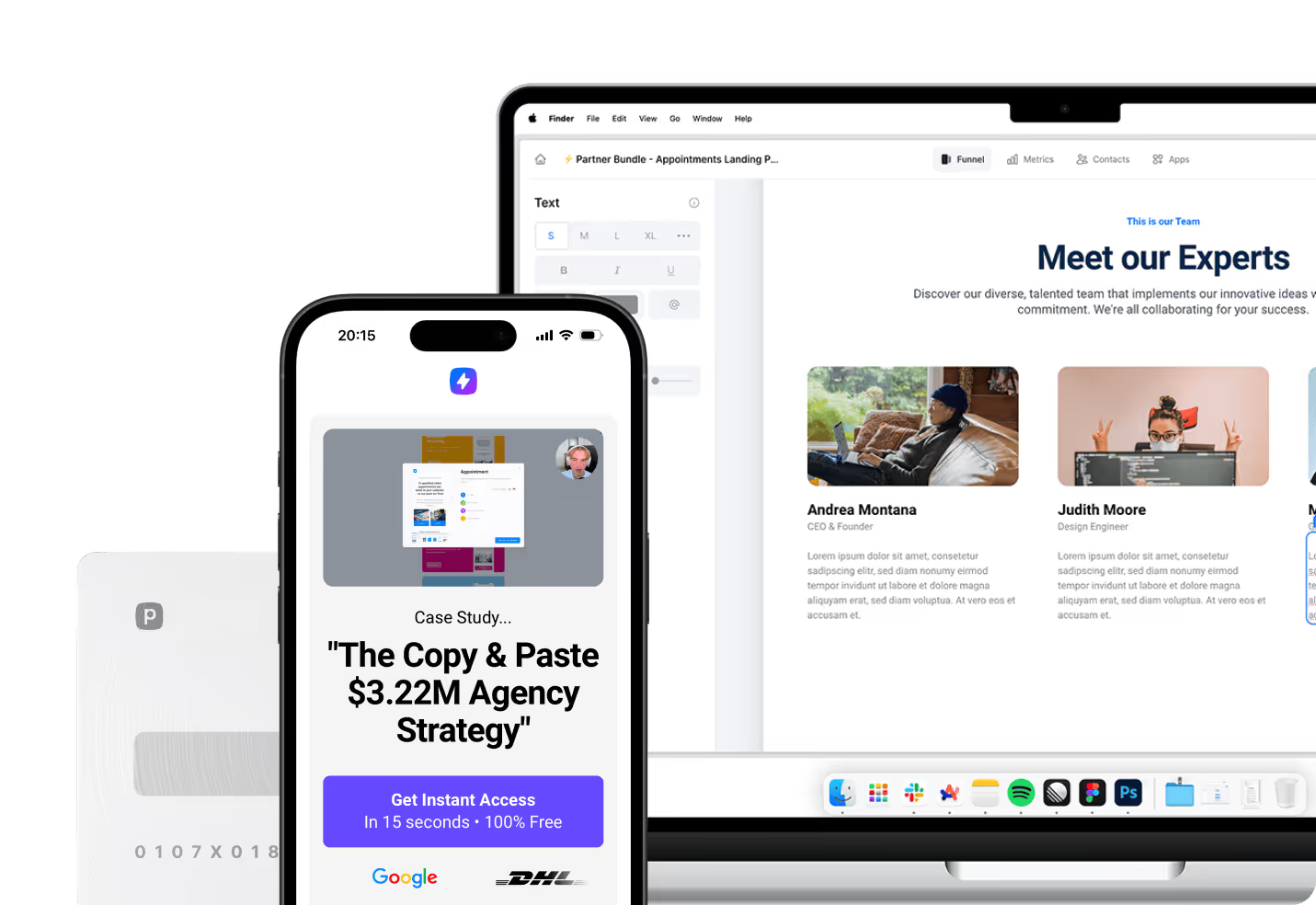Looking at the current state of digital marketing in 2025, businesses are spending more than ever on online advertising, with landing page conversion rates directly impacting their bottom line. With countless platforms promising to help you create high-converting pages, the choice between specialized tools like Instapage and LaunchRock has become increasingly important for marketers managing tight budgets and even tighter deadlines. Both platforms have evolved significantly over the past few years, adapting to new privacy regulations, mobile-first indexing, and the growing demand for personalized user experiences.
What Makes These Platforms Different?
Instapage and LaunchRock represent two distinct philosophies in landing page creation, each designed for different stages of business growth and marketing sophistication. Instapage positions itself as a comprehensive solution for established businesses seeking advanced optimization capabilities and pixel-perfect design control. LaunchRock, originally built for pre-launch campaigns, specializes in creating anticipation and leveraging viral growth mechanics to build early audiences.
The fundamental difference lies in their target users and primary objectives. Instapage caters to marketing teams managing multiple campaigns across various products or services, requiring detailed analytics and extensive customization options. LaunchRock appeals to entrepreneurs and startups focused on validating concepts and building initial market interest before full product launches.
Which Platform Fits Your Business Stage?
Your current business phase significantly influences which platform will serve you better. Established companies with dedicated marketing teams and substantial traffic volumes benefit most from Instapage’s sophisticated features and optimization tools. These businesses typically have clear conversion goals and the resources to invest in comprehensive testing and refinement processes.
Startups and early-stage ventures often find LaunchRock’s streamlined approach more suitable for their immediate needs. The platform’s emphasis on simplicity and viral growth aligns perfectly with businesses still validating their market potential. Companies operating with limited budgets and technical resources can launch effective campaigns without extensive design expertise or significant financial investment.
How User-Friendly Are These Platforms?
Both platforms prioritize ease of use, but they achieve this goal through different approaches that reflect their target audiences. Instapage offers a polished, professional interface with drag-and-drop functionality that provides extensive control over page elements. The platform includes helpful features like grid systems for precise alignment and group selection tools that streamline complex design tasks.
LaunchRock takes a more guided approach, walking users through a sequential process from template selection to content population. This method significantly reduces the learning curve and time investment required to launch a functional page. Most users can master LaunchRock’s basic functionality within 30 minutes, while Instapage typically requires 1-2 hours to achieve similar proficiency.
The mobile preview and responsive design capabilities also differ between platforms. Instapage provides granular control over how elements reposition across different screen sizes, allowing for precise mobile optimization. LaunchRock offers standard responsive templates that automatically adjust to various devices, though with less customization flexibility.
Design Flexibility vs Speed
The trade-off between design flexibility and deployment speed represents a crucial consideration for most businesses. Instapage excels when projects require specific brand implementation or unique design elements that standard templates cannot accommodate. The platform’s advanced customization options enable marketing teams to create truly distinctive pages that align perfectly with established brand guidelines.
LaunchRock prioritizes rapid deployment over extensive customization, making it ideal for time-sensitive campaigns or businesses that prefer functional simplicity over design complexity. The platform’s streamlined approach eliminates many design decisions that can slow down the creation process, allowing users to focus on messaging and content rather than visual details.
Transform Your Funnels with Perspective Today
While Instapage and LaunchRock represent established approaches to landing page creation, Perspective Funnels emerges as a compelling modern alternative that addresses the mobile-first reality of today's digital landscape. Unlike traditional platforms that adapt desktop designs for mobile use, Perspective is built from the ground up with mobile users in mind, creating interactive, fast-loading experiences that mirror the seamless navigation users expect from social media platforms. This innovative funnel builder combines lightning-fast page speeds with modern design templates and interactive tools that eliminate the friction commonly associated with mobile conversions.
What sets Perspective apart is its comprehensive approach to funnel management, incorporating built-in CRM capabilities, advanced analytics, and personalization features that eliminate the need for multiple separate tools. This integrated ecosystem proves particularly valuable for creators, agencies, and mobile-focused marketers who need to launch high-converting campaigns quickly without sacrificing functionality. The platform strikes an optimal balance between customization flexibility and deployment simplicity, allowing users to create sophisticated funnels in under 60 minutes while maintaining the advanced features that drive meaningful results. For businesses seeking a solution that bridges the gap between LaunchRock's simplicity and Instapage's power, Perspective offers a mobile-native approach that aligns with modern user behavior and conversion optimization principles.
What Template Options Do You Get?
Template quality and variety significantly impact your ability to create effective landing pages quickly and efficiently. Both platforms offer different approaches to template design that reflect their core philosophies and target markets:
Instapage Templates:
- Extensive Library: Over 500 professionally designed templates across multiple industries and campaign types
- Conversion Optimized: Each template incorporates proven best practices for element placement and call-to-action visibility
- Industry Specific: Templates categorized by business type, making it easy to find relevant starting points
- Unlimited Customization: Templates serve as flexible starting points rather than rigid frameworks
LaunchRock Templates:
- Focused Selection: Approximately 50 templates specifically designed for pre-launch and anticipation campaigns
- Bold Visual Impact: Templates emphasize high-impact visuals and prominent sign-up forms
- Countdown Integration: Built-in countdown timers and urgency elements to drive immediate action
- Simplified Customization: Basic color, font, and content modifications while maintaining template structure
Template responsiveness ensures your pages look professional across all devices, though Instapage offers more control over mobile-specific adjustments. LaunchRock’s templates automatically adapt to different screen sizes with minimal user intervention required.
The customization philosophy differs significantly between platforms. Instapage treats templates as starting suggestions that can be completely transformed, while LaunchRock maintains more of the original template structure to ensure consistent performance and visual appeal.
How Much Can You Customize Your Pages?
Customization capabilities determine how closely your landing pages can match your brand identity and specific campaign requirements. Instapage provides comprehensive design control that extends to virtually every page element, including advanced typography options with hundreds of web fonts and custom font upload capabilities. The platform’s color management system supports precise brand color matching through hex codes, RGB values, and opacity settings.
Advanced users can implement custom CSS and HTML code, enabling specialized functionality beyond the standard editor options. This level of control appeals to marketing teams working within established brand guidelines that require precise implementation across all marketing materials. Instapage also offers sophisticated animation options and interactive elements that can enhance user engagement.
LaunchRock focuses on streamlined customization that emphasizes efficiency over unlimited design potential. The platform provides basic typography controls with curated font selections and predefined color schemes that can be adjusted to approximate brand colors. While limiting advanced styling options, LaunchRock simplifies the customization process through template variants with different structural layouts.
Brand Consistency Considerations
Maintaining brand consistency across marketing materials becomes increasingly important as businesses grow and develop more sophisticated marketing programs. Instapage’s comprehensive customization capabilities enable perfect brand alignment, making it suitable for companies with established visual identities and detailed brand guidelines.
LaunchRock’s simplified approach works well for businesses still developing their brand identity or those prioritizing speed over perfect brand implementation. The platform’s template-based approach ensures visual consistency within campaigns, even if it doesn’t perfectly match existing brand materials.
What Lead Capture Features Are Available?
Effective lead capture represents the primary objective for most landing pages, making form building capabilities a critical evaluation factor. Instapage offers sophisticated form creation tools that balance comprehensive data collection with user experience optimization. The platform supports multi-step forms with conditional logic, enabling progressive profiling techniques that increase conversion rates by distributing form fields across multiple steps.
Advanced form features include custom validation rules, hidden fields for tracking parameters, and GDPR-compliant consent checkboxes. Direct integration with major CRM systems and email marketing platforms facilitates immediate lead processing without requiring additional tools or manual data transfer processes.
LaunchRock approaches form building with viral growth mechanics built into the core functionality. The platform’s signature referral system automatically generates unique sharing links for each subscriber, encouraging organic campaign amplification through social networks. This gamification approach rewards users who generate multiple sign-ups with early access or special offers, effectively turning subscribers into campaign advocates.
Conversion Optimization Features
Both platforms include spam protection measures, though Instapage offers more sophisticated implementations including invisible CAPTCHA technologies that maintain user experience while preventing automated submissions. Form analytics also differ significantly, with Instapage providing detailed insights on completion rates, abandonment points, and field-specific hesitation metrics.
LaunchRock emphasizes referral tracking statistics that show viral spread patterns and identify which users drive the most organic growth. This approach proves particularly valuable for businesses seeking to leverage word-of-mouth marketing and build communities around their products or services.
How Robust Are the Testing Capabilities?
Systematic testing and optimization capabilities directly impact your ability to maximize conversion rates and marketing return on investment. Instapage delivers enterprise-grade A/B testing through its Experimentation feature, allowing marketers to create multiple page variants and test elements ranging from headlines and imagery to form fields and button colors.
The platform supports sophisticated multivariate testing for simultaneous evaluation of multiple variables, helping identify optimal element combinations. Advanced features include traffic allocation controls for directing specific visitor percentages to different variants, confidence scoring to determine statistical significance, and heat mapping tools that visualize user engagement patterns.
LaunchRock offers more basic testing functionality focused on measuring overall conversion rates rather than granular element optimization. The platform supports simple A/B tests between two page variants but lacks advanced features for isolating individual elements or conducting complex multivariate experiments.
Analytics and Performance Tracking
Testing capabilities connect directly to analytics depth and reporting functionality. Instapage provides comprehensive performance insights across multiple dimensions, including conversion rates, visitor engagement metrics, and detailed form analytics. Heat mapping and user recording capabilities reveal interaction patterns and identify potential usability issues.
LaunchRock focuses its analytics on metrics relevant to viral growth and early-stage campaigns. The platform emphasizes referral analytics that demonstrate sharing effectiveness and calculate virality coefficients measuring word-of-mouth momentum. Geographic distribution maps help identify promising markets and audience segments.
What Integration Options Are Available?
Seamless integration with existing marketing tools significantly impacts workflow efficiency and data utilization across your marketing technology stack. Both platforms offer different approaches to connecting with external services and platforms:
Instapage Integrations:
- CRM Systems: Native connections with Salesforce, HubSpot, Zoho, and other major platforms
- Email Marketing: Direct integration with Mailchimp, Constant Contact, AWeber, and Campaign Monitor
- Analytics Tools: Comprehensive Google Analytics, Google Tag Manager, and Facebook Pixel support
- Advanced Tracking: Webhook functionality for custom integration development
LaunchRock Integrations:
- Email Services: Basic connections with popular email marketing platforms
- Social Media: Built-in sharing and referral tracking across major social networks
- Analytics: Standard Google Analytics integration with limited configuration options
- Zapier Support: Extended connectivity to hundreds of additional services
Both platforms provide Zapier connectivity, though Instapage offers more triggers and actions within the ecosystem. Webhook support also differs significantly, with Instapage providing comprehensive functionality for custom development while LaunchRock’s implementation remains more limited.
Workflow Automation Considerations
Integration capabilities directly impact your ability to automate marketing workflows and maintain consistent data flow across platforms. Instapage’s extensive integration ecosystem supports complex marketing automation sequences and detailed lead scoring processes. The platform’s advanced tracking capabilities enable sophisticated attribution modeling and customer journey analysis.
LaunchRock’s integration focus aligns with its viral growth emphasis, providing tools for social sharing automation and referral tracking rather than complex workflow management. This approach works well for businesses prioritizing organic growth over detailed marketing automation.
How Do Pricing Models Compare?
Pricing structures reflect each platform’s market positioning and feature complexity, representing important considerations for businesses evaluating long-term marketing tool investments. Instapage positions itself as a premium solution with pricing that reflects its enterprise-grade capabilities and comprehensive feature set.
Instapage’s Create plan starts at $99 monthly when billed monthly or $79 monthly when billed annually, providing unlimited landing pages, advanced analytics, and basic A/B testing capabilities. The Optimize plan ranges from $199-299 monthly depending on visitor limits, while Enterprise clients receive custom pricing for additional features including AMP pages, guaranteed uptime agreements, and dedicated customer success management.
LaunchRock offers significantly more accessible pricing aimed at startups and small businesses with limited marketing budgets. The platform provides monthly plans at $29 per month, annual plans at $20.75 per month, and a lifetime access option for $349. This pricing structure makes LaunchRock substantially more affordable for budget-conscious businesses.
Value Proposition Analysis
The value proposition for each platform aligns with their respective target markets and feature sets. Instapage justifies premium pricing through conversion optimization capabilities that potentially deliver substantial return on investment for businesses with established traffic volumes and conversion-dependent revenue models.
LaunchRock provides value through accessibility and specialization in pre-launch marketing, offering essential functionality at minimal cost for ventures validating market potential. The platform’s viral growth features can generate significant organic reach that justifies the investment even for budget-conscious businesses.
Best Practices for Platform Selection
Choosing between these platforms requires careful consideration of multiple factors that extend beyond immediate feature comparisons. Following these comprehensive guidelines will help ensure your selection aligns with both current needs and future growth plans:
- Evaluate your current marketing sophistication level and determine whether you need basic functionality or advanced optimization capabilities.
- Consider your team’s technical expertise and available time for learning new platforms, as this impacts implementation speed and ongoing efficiency.
- Assess your traffic volumes and conversion optimization needs, since advanced testing features only provide value with sufficient visitor numbers.
- Review your integration requirements with existing marketing tools and determine whether you need comprehensive connectivity or basic email marketing connections.
- Calculate the total cost of ownership including platform fees, design resources, and ongoing optimization efforts to understand true investment requirements.
- Plan for future growth and consider whether your chosen platform can scale with your business or if you’ll need to migrate to more sophisticated tools.
Choose Your Landing Page Platform Wisely
Selecting the right landing page platform significantly impacts your marketing success and long-term business growth trajectory. Instapage excels for established businesses with dedicated marketing teams seeking sophisticated optimization capabilities and extensive customization options. The platform’s comprehensive feature set justifies its premium pricing for companies with substantial traffic volumes and conversion-dependent revenue models.
LaunchRock presents a compelling alternative for startups, entrepreneurs, and small businesses focused on pre-launch marketing and early audience building. Its streamlined interface, viral sharing capabilities, and accessible pricing make it particularly suitable for validating business concepts and generating initial market interest without extensive resource investments.
Your decision should balance immediate needs against future marketing evolution, considering that some businesses may begin with LaunchRock for initial validation before transitioning to more sophisticated platforms as their programs mature. By aligning platform selection with specific business objectives, marketing sophistication levels, and available resources, you can ensure your landing page strategy effectively supports broader marketing goals and business development initiatives.
For mobile-driven marketers who prioritize speed, personalization, and performance in today’s mobile-first environment, Perspective Funnels presents a smart alternative that combines the best of both worlds. Its mobile-native architecture and integrated approach to CRM and analytics make it particularly well-suited for businesses that recognize mobile traffic as their primary conversion opportunity. As the digital landscape continues to evolve toward mobile-first experiences, platforms like Perspective that embrace this reality from the ground up may prove essential for maintaining competitive conversion rates.


















